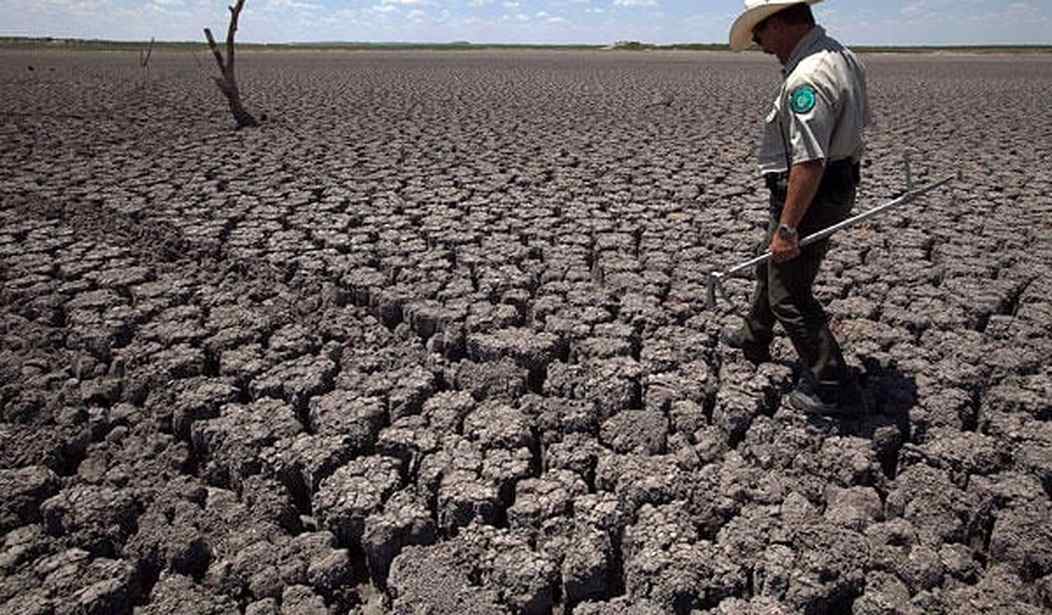WASHINGTON – A White House report assembled by 300 noted scientists found that the nation already is experiencing the effects of global climate change and warned that the situation is likely to worsen.
The National Climate Assessment, reviewed by the National Academies of Sciences and overseen by the Department of Commerce to assess current research on global warming and calculate its implications, found that “climate change, once considered an issue for a distant future, has moved firmly into the present.”
The report concludes that “the evidence of human-induced climate change continues to strengthen and that impacts are increasing across the country.”
“Summers are longer and hotter and extended periods of unusual heat last longer than any living American has ever experienced,” the report said. “Winters are generally shorter and warmer. Rain comes in heavier downpours. People are seeing changes in the length and severity of seasonal allergies, the plant varieties that thrive in their gardens, and the kinds of birds they see in any particular month in their neighborhoods.”
Average temperatures in the U.S. have increased by 1.3 degrees Fahrenheit to 1.9 degrees Fahrenheit since 1895, according to the report, and most of the increase has occurred since 1970. The most recent decade proved to be the nation’s and the world’s hottest on record and 2012 was the hottest year on record in the continental U.S.
All U.S. regions have experienced warming in recent decades, but the extent of warming has not been uniform. In general, temperatures are rising more quickly in the north. Alaskans have experienced some of the largest increases in temperature between 1970 and the present. People living in the Southeast have experienced some of the smallest temperature increases over this period.
Temperatures are projected to rise another 2 degrees Fahrenheit to 4 degrees Fahrenheit in most areas of the U.S. over the next few decades. If the production of greenhouse gases like carbon dioxide continues to surge the warming could exceed 10 degrees by 2100.
“The observed warming and other climatic changes are triggering wide-ranging impacts in every region of our country and throughout our economy,” the report said. “Some of these changes can be beneficial over the short run, such as a longer growing season in some regions and a longer shipping season on the Great Lakes. But many more are detrimental, largely because our society and its infrastructure were designed for the climate that we have had, not the rapidly changing climate we now have and can expect in the future. In addition, climate change does not occur in isolation. Rather, it is superimposed on other stresses, which combine to create new challenges.”
The report was immediately embraced by advocacy groups that have been warning about the potential impact of global climate change. Lyndsay Moseley Alexander, assistant vice president and director of the Healthy Air Campaign of the American Lung Association, said the findings establish that “climate change threatens our ability to protect our communities, especially those most vulnerable, against the dangers of air pollution, increased allergens, extreme weather and wildfire. We must meet the climate challenge now if we want to protect the health of millions of Americans living with asthma and other lung diseases, as well as children, seniors, low income and minority communities.”
John Podesta, a senior advisor to President Obama, called the report “the most authoritative and comprehensive source of scientific information ever produced about how climate change is going to impact all regions of the United States and key sectors of the national economy.”
“It’s been a tremendous undertaking — hundreds of the best climate scientists from across the U.S., not just in the public sector but in the private sector as well, have worked over the last four years to produce this report,” Podesta said. “This assessment is about presenting actionable science.”
But climate-change critics were quick to attack. Sen. David Vitter (R-La.), ranking member of the Senate Environment and Public Works Committee, said the document is “a political one used to justify more government overreach.”
“Definitive policy decisions and regional planning based on far too many uncertainties could hurt our nation’s economic viability and competitiveness,” he said. “Look no further than the European nations the Obama administration aims to imitate whose policy decisions led them to economic failure.”
The Obama administration already has taken steps to address global climate change by attempting to limit greenhouse gas production. The Environmental Protection Agency has imposed restrictions on emissions from newly constructed coal-fired power plants and currently is contemplating strict new rules for those electric facilities already on line.
Rep. Fred Upton (R-Mich.), chairman of the House Energy & Commerce Committee, maintained that the report is “short on details about the policy responses that the president and his advisors are seeking to unilaterally impose on the American people.”
Upton said any regulations promulgated by the Obama administration in an effort to reduce global warming will likely “have a significant impact on jobs, the economy and energy reliability. Moreover, the Obama administration and its federal agencies are already spending billions of dollars annually on global warming activities, and it is still largely unclear what these programs have accomplished and how they will change the weather.”
The extensive 830-page report determined that the past decade was the warmest on record in the U.S. The number of extreme weather events, especially torrential rains, is on the upswing and changing climate conditions will contribute to a hike in disease transmission and a decrease in air quality. Scientists who contributed said they were surprised to find that the rise in sea levels and the deterioration of Arctic sea ice have outpaced earlier projections, which further bolstered the claim that “climate change is happening now.”
And most of the change over the past 50 years can be laid at the door of human activity, the report says. Data shows that natural factors like the sun and volcanoes cannot have caused the warming that has been observed. Instead the burning of coal, oil and gas, and the clearing of forests have increased the concentration of carbon dioxide in the atmosphere by more than 40 percent since the Industrial Revolution, thus trapping heat. Methane and nitrous oxide emissions from agriculture and other human activities also add to the production of heat-trapping gases.
“In fact, if not for human activities, global climate would actually have cooled slightly over the past 50 years,” the report concluded. “The pattern of temperature change through the layers of the atmosphere, with warming near the surface and cooling higher up in the stratosphere, further confirms that it is the buildup of heat-trapping gases — also known as ‘greenhouse gases’ — that has caused most of the Earth’s warming over the past half century.”
While the globe’s climate is projected to continue to change, the report stressed that steps can be taken to limit the damaging impacts. Alexander, with the American Lung Association, noted that “as a nation, we have a very important choice to make.”
“Placing first-ever limits on carbon pollution from existing power plants is a vital step to prevent the worst effects of climate change,” she said. “We cannot allow politics and pressure from polluters to slow clean-up of carbon pollution. Unless we adopt strong carbon standards, the National Climate Assessment shows that reducing air pollution and protecting our families and our neighbors will become even more challenging.”
But Sen. Jim Inhofe (R-Okla.) countered by claiming “we can all agree that natural variations in the climate are taking place, but man-made global warming still remains a theory.”
“The president’s climate change policies will only cause a greater disparity in our nation’s income gap and prevent our nation from achieving its full economic potential,” he said, by “jumping at opportunities to sideline critical domestic energy opportunities for the United States and instead discuss global warming alarmism.”
“Fear tactics and money are powerful tools in politics,” he said.
James Taylor, senior fellow for Environmental Policy at The Heartland Institute, asserted that it would “take a whole squadron of environmental activists years to come up with the whoppers told in this report.”
“The report falsely asserts that global warming is causing more extreme weather events, more droughts, more record high temperatures, more wildfires, warmer winters, etc., when each and every one of these false assertions is contradicted by objective, verifiable evidence,” he said. “It reads like a press release from The Nature Conservancy and the Union of Concerned Scientists – probably because it essentially is a press release from The Nature Conservancy and the Union of Concerned Scientists.”
Taylor called the report “laughably misleading” and predicted that “few objective climate experts will take this report seriously.”
“Even those scientists who are not overtly affiliated with environmental activist groups were almost uniformly on the record as global warming alarmists before being chosen to write this report,” he said.









Join the conversation as a VIP Member